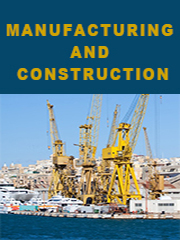Report overview
Energy recovery ventilator (ERV) is a type of mechanical equipment that features a heat exchanger combined with a ventilation system for providing controlled ventilation into a building. An energy recovery ventilator with humidity regulation incorporates a method to remove excess humidity or add humidity to the ventilating air that is being brought into a house. This report focus on wall-mount, ceiling-mount and cabinet mount type products.
This report aims to provide a comprehensive presentation of the global market for Energy Recovery Ventilation System, with both quantitative and qualitative analysis, to help readers develop business/growth strategies, assess the market competitive situation, analyze their position in the current marketplace, and make informed business decisions regarding Energy Recovery Ventilation System. This report contains market size and forecasts of Energy Recovery Ventilation System in global, including the following market information:
Global Energy Recovery Ventilation System Market Revenue, 2018-2023, 2024-2029, ($ millions)
Global Energy Recovery Ventilation System Market Sales, 2018-2023, 2024-2029, (K Units)
Global top five Energy Recovery Ventilation System companies in 2022 (%)
The global Energy Recovery Ventilation System market was valued at US$ 3547.7 million in 2022 and is projected to reach US$ 7593.4 million by 2029, at a CAGR of 11.5% during the forecast period. The influence of COVID-19 and the Russia-Ukraine War were considered while estimating market sizes.
Global Energy Recovery Ventilation System key players include Carrier (United Technologies), Johnson Controls, Daikin Industries, Trane, Nortek etc. Global top five manufacturers hold a share over 40%.
North America is the largest market, with a share over 50%, followed by Japan and Europe, both have a share over 20% percent.
In terms of product, Ceiling-Mount is the largest segment, with a share over 50%. And in terms of application, the largest application is Residential followed by Commercial.
We surveyed the Energy Recovery Ventilation System manufacturers, suppliers, distributors and industry experts on this industry, involving the sales, revenue, demand, price change, product type, recent development and plan, industry trends, drivers, challenges, obstacles, and potential risks.
Total Market by Segment:
Global Energy Recovery Ventilation System Market, by Type, 2018-2023, 2024-2029 ($ Millions) & (K Units)
Global Energy Recovery Ventilation System Market Segment Percentages, by Type, 2022 (%)
Wall-Mount
Ceiling-Mount
Cabinet-Mount
Global Energy Recovery Ventilation System Market, by Application, 2018-2023, 2024-2029 ($ Millions) & (K Units)
Global Energy Recovery Ventilation System Market Segment Percentages, by Application, 2022 (%)
Residential
Commercial
Others
Global Energy Recovery Ventilation System Market, By Region and Country, 2018-2023, 2024-2029 ($ Millions) & (K Units)
Global Energy Recovery Ventilation System Market Segment Percentages, By Region and Country, 2022 (%)
North America
US
Canada
Mexico
Europe
Germany
France
U.K.
Italy
Russia
Nordic Countries
Benelux
Rest of Europe
Asia
China
Japan
South Korea
Southeast Asia
India
Rest of Asia
South America
Brazil
Argentina
Rest of South America
Middle East & Africa
Turkey
Israel
Saudi Arabia
UAE
Rest of Middle East & Africa
Competitor Analysis
The report also provides analysis of leading market participants including:
Key companies Energy Recovery Ventilation System revenues in global market, 2018-2023 (Estimated), ($ millions)
Key companies Energy Recovery Ventilation System revenues share in global market, 2022 (%)
Key companies Energy Recovery Ventilation System sales in global market, 2018-2023 (Estimated), (K Units)
Key companies Energy Recovery Ventilation System sales share in global market, 2022 (%)
Further, the report presents profiles of competitors in the market, key players include:
Carrier (United Technologies)
Johnson Controls
Daikin Industries
Trane
Nortek
Lennox International
Mitsubishi Electric
Greenheck
FUJITSU
Zehnder
LG Electronics
Renewaire
Ostberg
Outline of Major Chapters:
Chapter 1: Introduces the definition of Energy Recovery Ventilation System, market overview.
Chapter 2: Global Energy Recovery Ventilation System market size in revenue and volume.
Chapter 3: Detailed analysis of Energy Recovery Ventilation System manufacturers competitive landscape, price, sales and revenue market share, latest development plan, merger, and acquisition information, etc.
Chapter 4: Provides the analysis of various market segments by type, covering the market size and development potential of each market segment, to help readers find the blue ocean market in different market segments.
Chapter 5: Provides the analysis of various market segments by application, covering the market size and development potential of each market segment, to help readers find the blue ocean market in different downstream markets.
Chapter 6: Sales of Energy Recovery Ventilation System in regional level and country level. It provides a quantitative analysis of the market size and development potential of each region and its main countries and introduces the market development, future development prospects, market space of each country in the world.
Chapter 7: Provides profiles of key players, introducing the basic situation of the main companies in the market in detail, including product sales, revenue, price, gross margin, product introduction, recent development, etc.
Chapter 8: Global Energy Recovery Ventilation System capacity by region & country.
Chapter 9: Introduces the market dynamics, latest developments of the market, the driving factors and restrictive factors of the market, the challenges and risks faced by manufacturers in the industry, and the analysis of relevant policies in the industry.
Chapter 10: Analysis of industrial chain, including the upstream and downstream of the industry.
Chapter 11: The main points and conclusions of the report.
